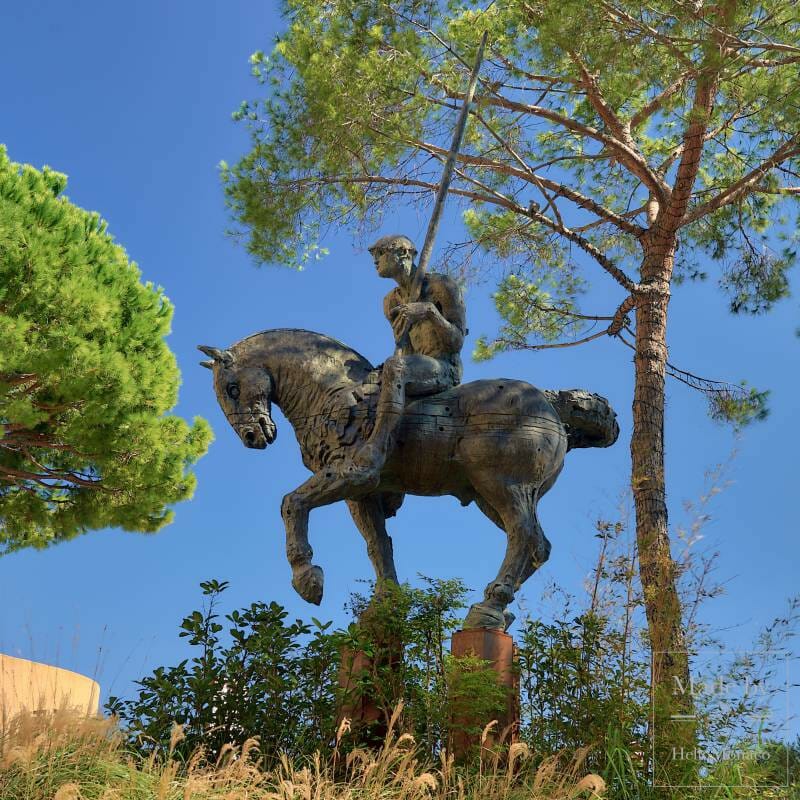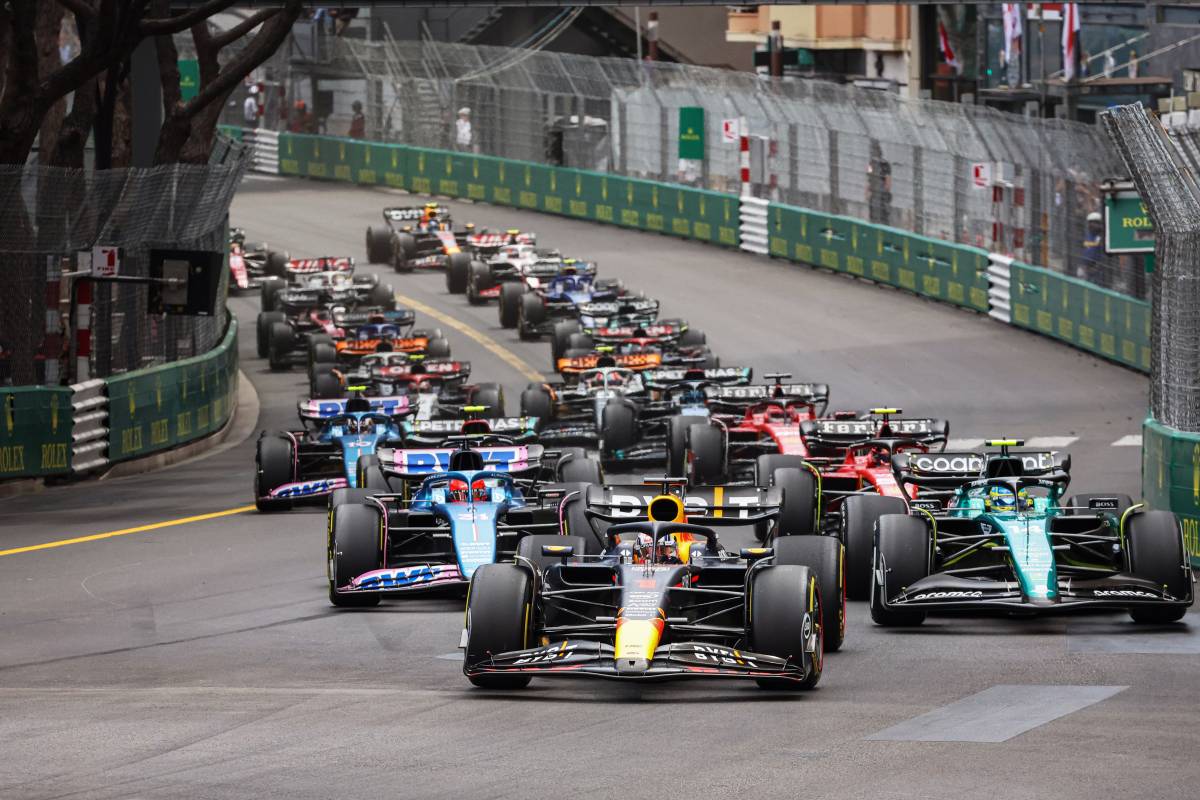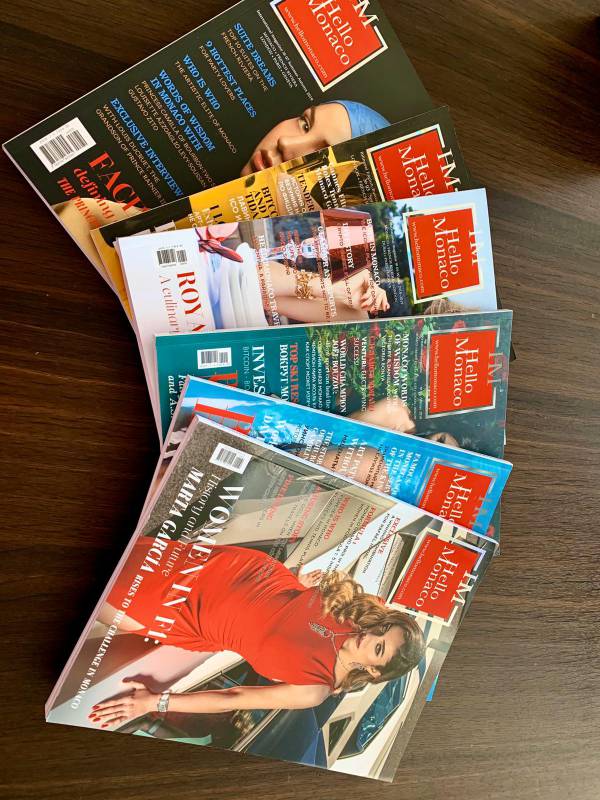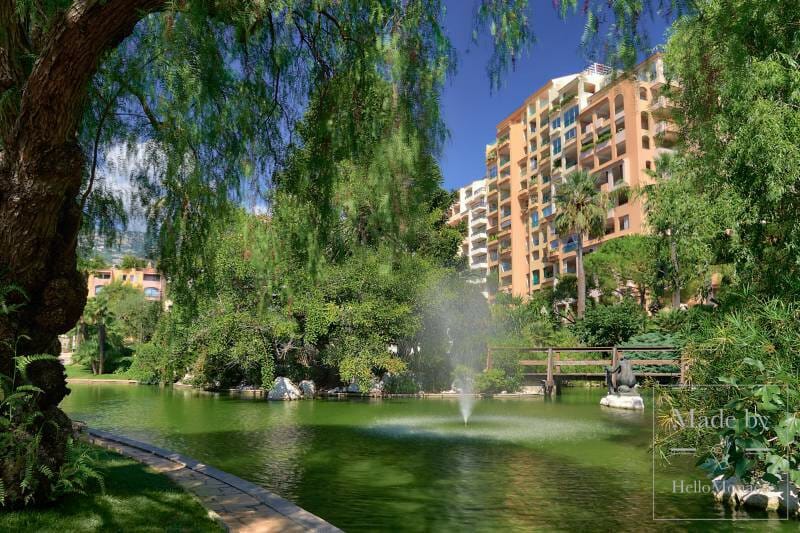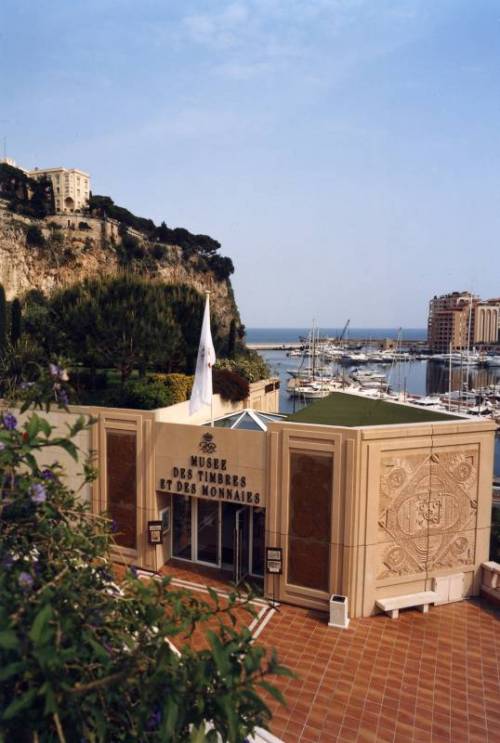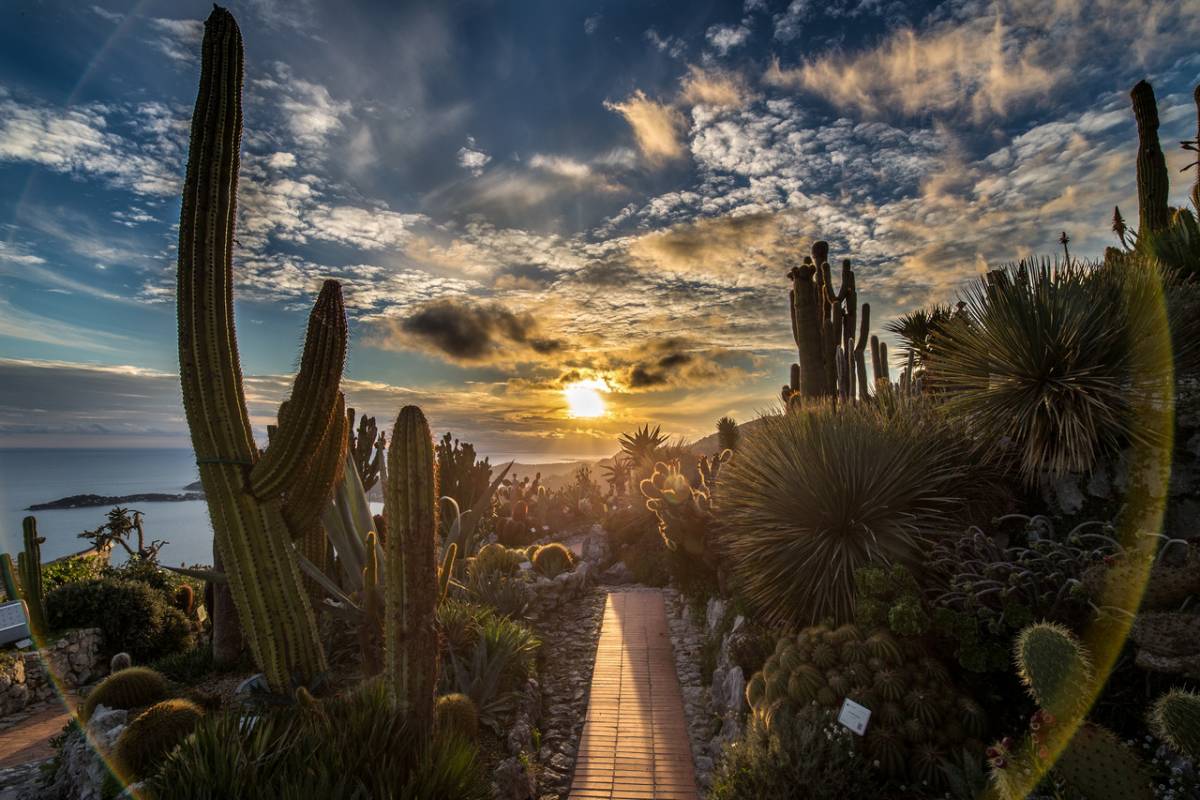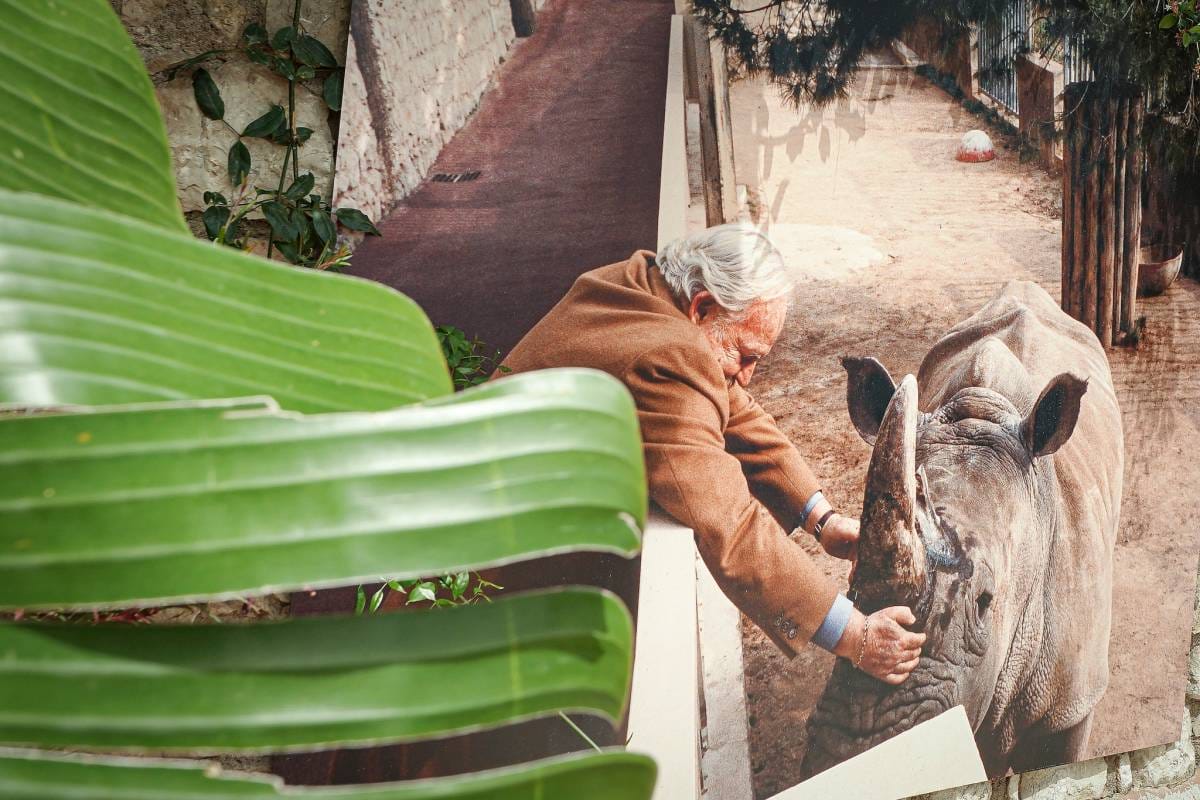At the initiative of Prince Albert II, the Fontvieille park has been acquiring sculptures of famous contemporary artists from all over the world. This is one of the Prince’s contributions to the development of modern art in the Principality, already famous for a great variety of cultural events.
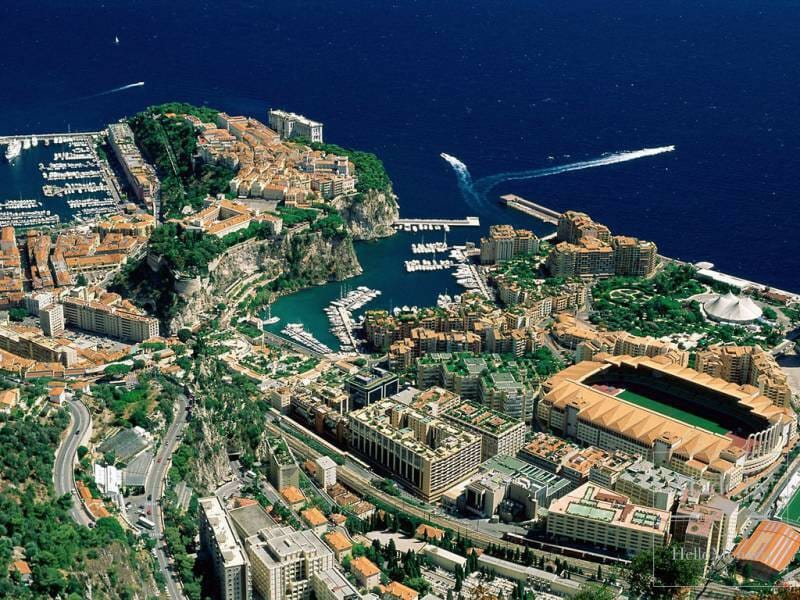
Fontvieille is a venue of the Contemporary Art Fair, known as the «White Night», which encourages the work of new contemporary artists. If you stroll along its peaceful alleys, you will definitely come across at least one or two of these sculptures. Upon further inspection, you will find that most sculptures bear a plaque with the name and artist. Some have been there for several decades and few people remember how they came to the park. However, all these works of art remain in excellent condition thanks to the proper care and protection. So let’s take a stroll across the shady park of Fontvieille.
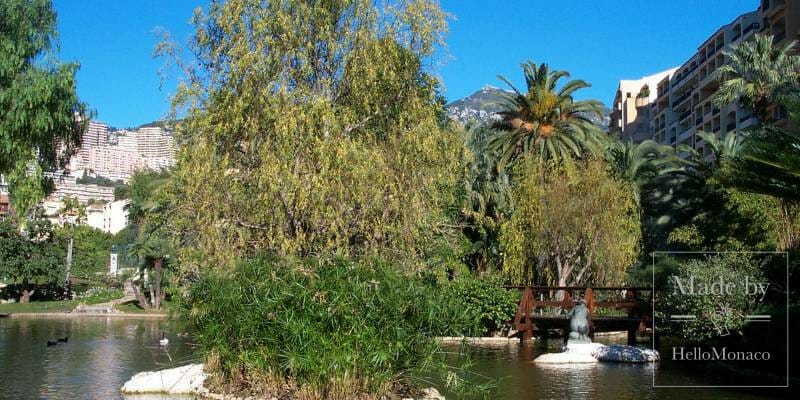
A Woman with a Cigarette
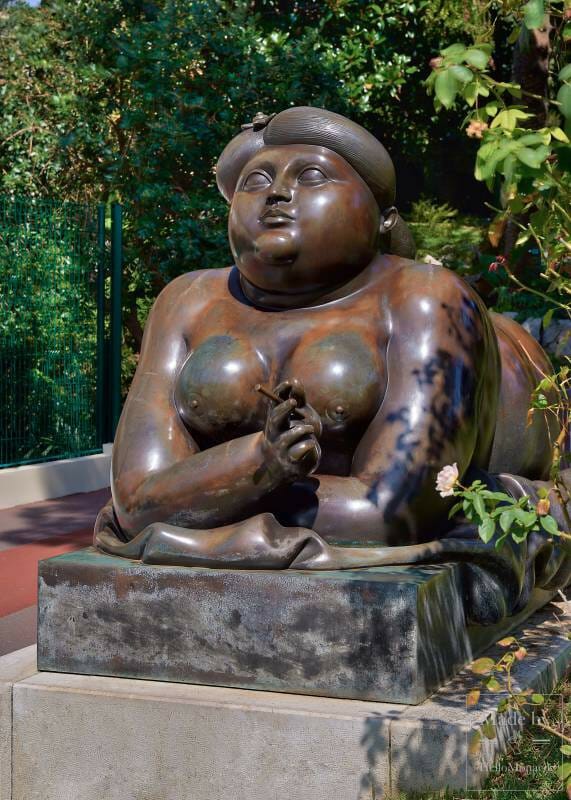
One of the first sculptures on our way is a lady of magnificent form who seems to be lying down on the green grass and thinking about eternity with a cigarette, lit-up. The sculpture is the creation of Fernando Botero, an 86-year old Colombian painter and sculptor. During his career, he traveled a great deal and quickly gained recognition. In 1992, Botero sculptures were presented in an exhibition on the Champs-Elysées in Paris.
But before his international acclaim, Botero’s career actually began with watercolors. Back then he was charging 200 dollars per piece and he had just moved to New York. Within a few years, he was not only making a living for himself, but providing for the rest of his family in Colombia.
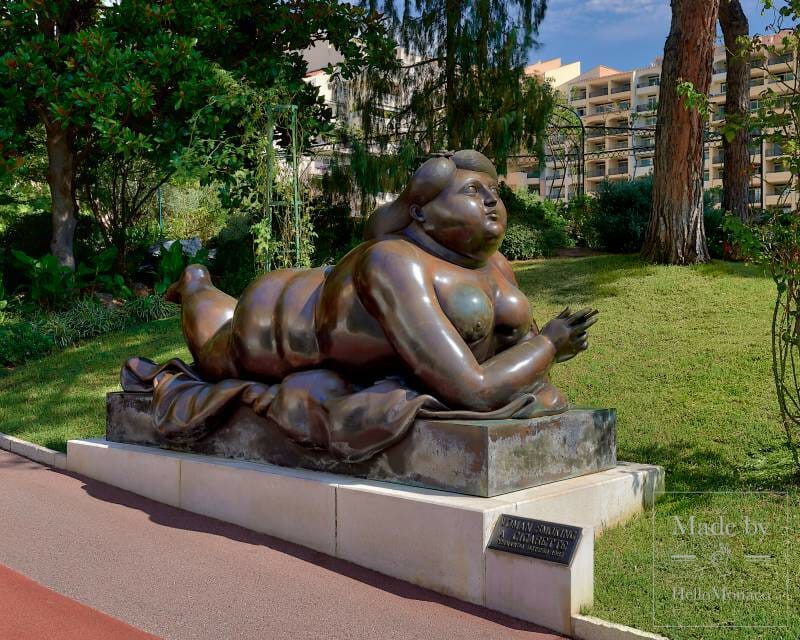
His open-air expositions became an absolute novelty. Botero was the very first artist and sculptor whose pieces interacted with the audience in this way. He was a pioneer who made this tradition popular among his fellow artists.
Fernando Botero has his own museum in Bogota, which is home to 123 of his works from watercolor paintings to sculptures. Botero continues to work to this day, being just as productive as in his younger years. The artist himself admits: «The only reason I am afraid of death, is because I have to stop creating, which I love so much».
«A Woman with a Cigarette» is made in bronze and dates back to 1984.
Incidentally, Monaco hosts another one of his sculptures named «Adam and Eve» which you can see on the terrace with a beautiful sea view, next to the Casino of Monte-Carlo.
Fish

The next sculpture that draws our attention is called «Fish» (1986). This work was a gift to Monaco from an Italian sculptor. The fish symbolizes the Mediterranean and reflects the efforts of Prince Albert II in protecting the endangered species. Not only fish, but also all marine flora and fauna in the region.
Evolution

Next to the «Fish», there is a sculpture by Emma de Sigaldi called «Evolution» (1979). The author lived in Monaco from 1954 up until the end of her days in 2010.
Emma did not become a sculptor straight away. She was born in Germany in 1910, and was a prima ballerina at the age of 17. Back in those years, she was friendly with the artists of the Bauhaus, a famous German School of Construction and Artistic design. That’s where she met her future husband, Count Felix de Sigaldi. The married couple then moved to Monaco.
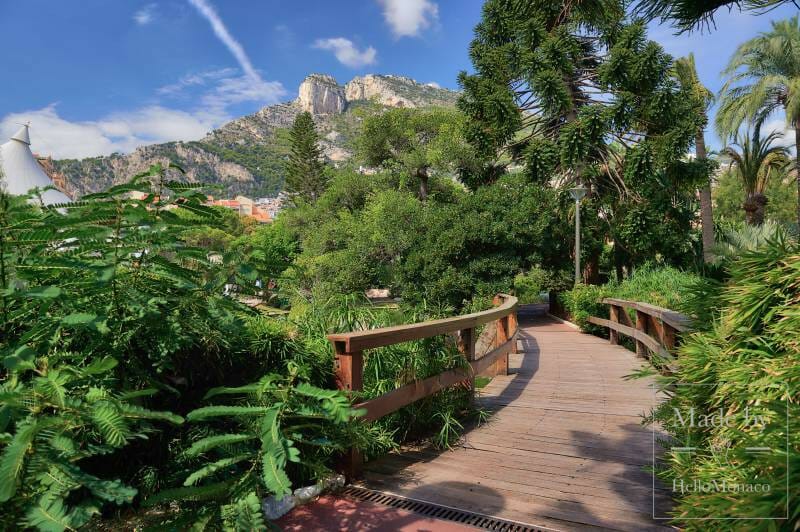
Once in the Principality, Emma turned to contemporary art and, in particular, to sculpture. Sculpture provided her with a new vehicle of artistic expression, as by that time she had to give up her passion for dancing. Princess Grace immediately fell in love with the work of Emma de Sigaldi, who mixed two techniques: cast iron and marble. Depending on the sculpture, Emma added more marble or cast iron. Many of her early works are very figurative and symbolic. In the 1980’s, her style turned more to expressionism.
The Sitting Couple
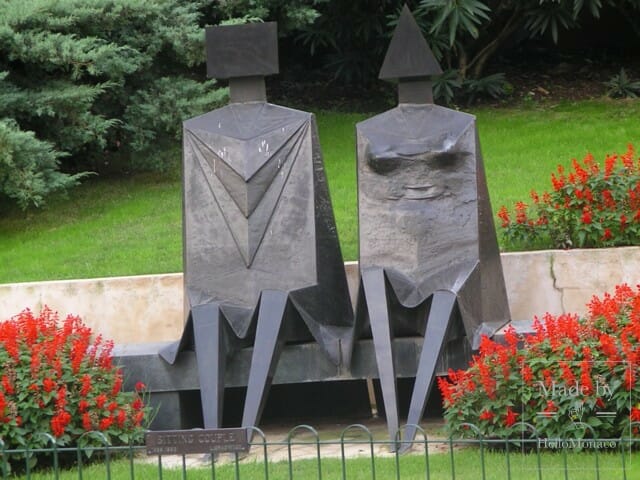
Walking in the shade of the park, you will definitely bump into the sculpture by Lynn Russell Chadwick called «The Sitting Couple». This English sculptor is known for his works all around the world. He received the highest award at the Venice Biennale in 1956. Then, 8 years later, Queen Elizabeth II awarded him with the The Most Excellent Order of the British Empire, and later, he also received the French Ordre des Arts et des Lettres in 1985.
And it is no surprise that one of his sculptures is exposed in Monaco’s park. Chadwick liked to decorate parks with his creations. The Englishman spent the last years of his life in Stroud, a town in Gloucestershire where he created the sculpture park called «Lypiatt Park».
The sculpture «The Sitting Couple» is not the only «couple» that he created. He gave the Hague (in the Netherlands) a similar work with the same name, but with the couple sculpted in a slightly different position.
The Washer Woman
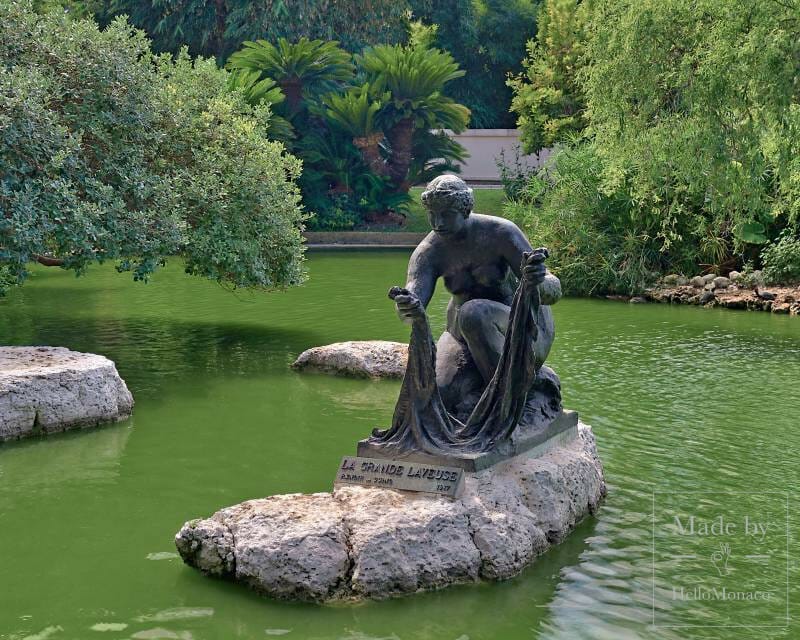
Further on, next to a small pond in the park, we notice a woman washing clothes in the water. «The Washer Woman» is the name of the work, indicated on the plaque. It is the copy of a very well-known sculpture which is a result of the fruitful collaboration between Auguste Renoir and his young assistant Richard Guino. The prototype of this sculpture was created in 1917, two years prior to Renoir’s death. It is astonishing that at 76 years old he still continued to work! During the years of this collaboration (Richard Guino was introduced to Renoir in 1913) they created a dozen of sculptures, which is an impressive result and proves how intimate was the mutual understanding between the elder Renoir and the young adventurer Gino.
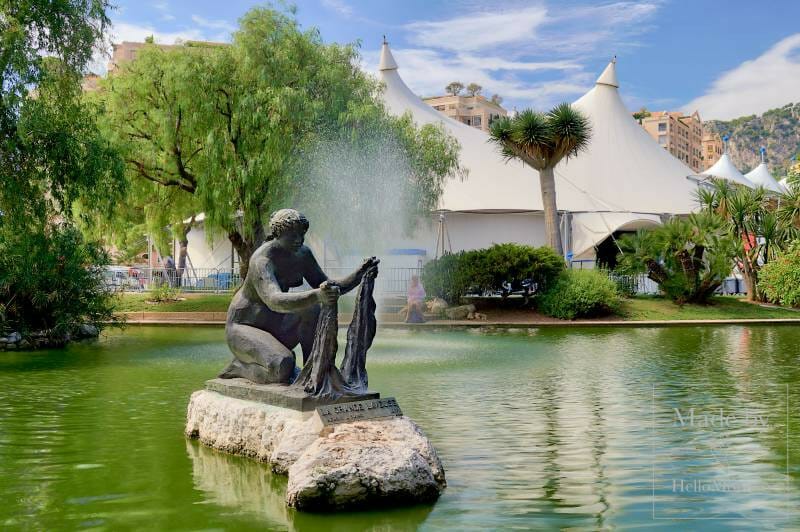
Until 1918 these masters worked together in the Renoir’s mansion in Cagnes-sur-Mer. There they created about 37 sculptures, many of them were realised based on Renoir’s sketches. Some critics claim that these works emphasise the characteristic style of the artist and show the surprisingly close spiritual connection erected between the two artists. One specialist in «New York Times» said in 1984: «Guino obviously became Renoir — or was obsessed with him».
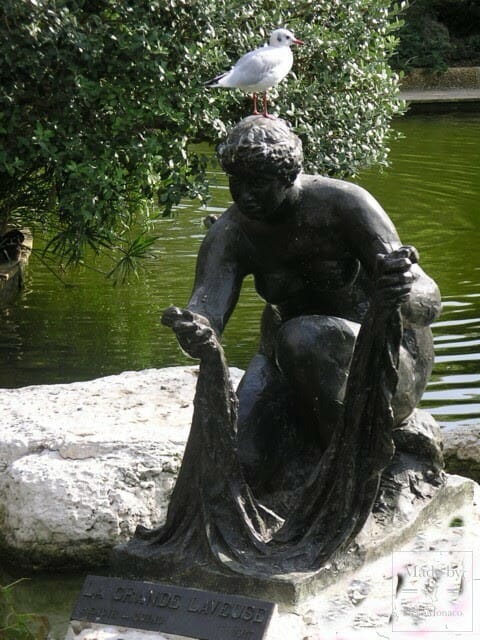
Therefore, the copy of this sculpture of «The Washer Woman» which decorates Fontvieille park remains one of the pearls of the sculptural collection of the Principality.
Atlantes
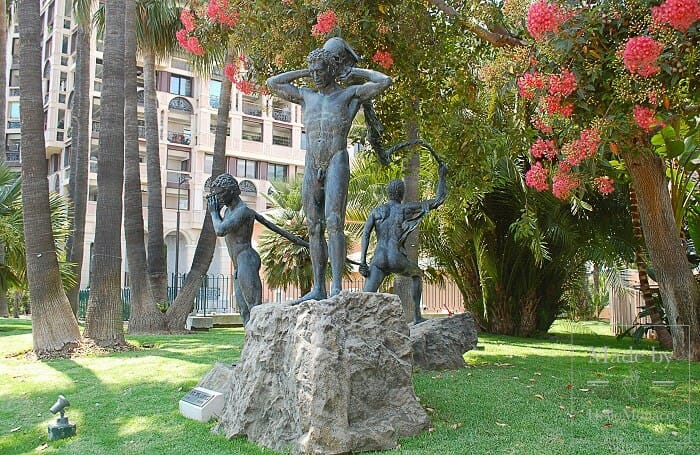
Also in this park you will find a piece of art made by a resident of Monaco. In 1989 the sculptor Blake offered to the Principality his sculpture called «Atlantes». Blake was born and grew up in Canada, then moved to Paris. In 1991 he opened his own studio in Monte-Carlo where he continues to work. Generally Blake’s works are realised in bronze and marble.
«Atlantes» is one of the main and most famous works by the artist. Having offered it to Monaco, he in this way showed his respect and love for the country where he achieved considerable success in his profession. Blake is also a member of the International Association of Arts of Monaco.
Motophant
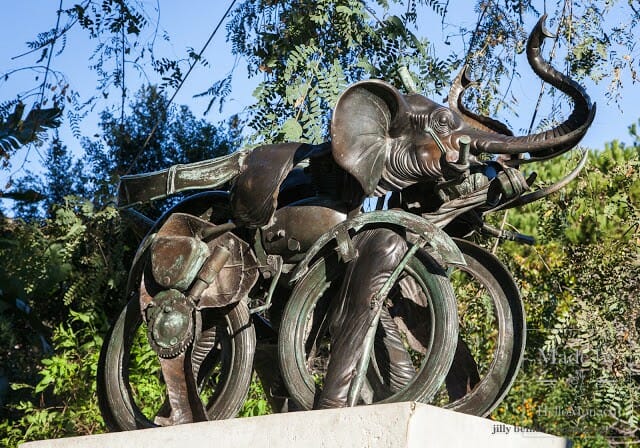
The strange elephant by this name will appear on your path while you walk in the Fontvieille park. Let’s stop for a while in front of this astonishing sculpture. It was created in 1988 by Arman (Armand Pierre Fernández), a Franco-American artist who was born in Nice in 1928. At the beginning of the 1960s he was a co-founder of a new movement in art called new realism. Later, from this movement was born the School of Nice in opposition to the Parisian school of avant-garde art.
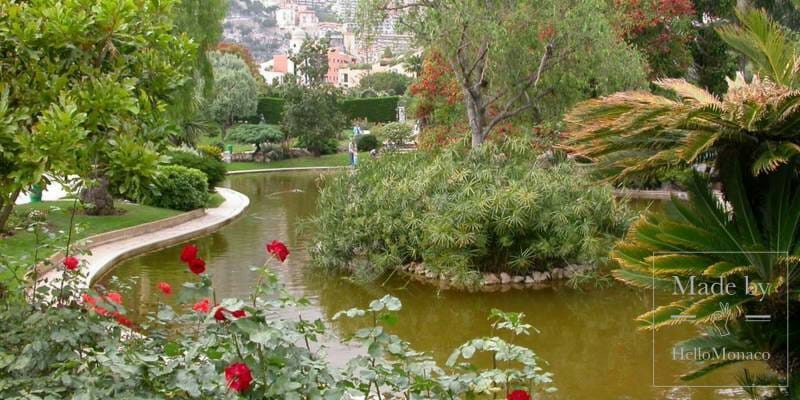
Arman was eager to show symbolically the awful consequences of the destruction of modern society, via his work. He considered consumer society a threat to the planet and has shown it in his numerous works. We see half-ruined forms demonstrating the harm that people cause to the environment. For example, «Motophant» shows us the ruinous interaction between technology and nature, and as we all perfectly understand, it is nature that is most at the risk.
The Heroic Cavalry
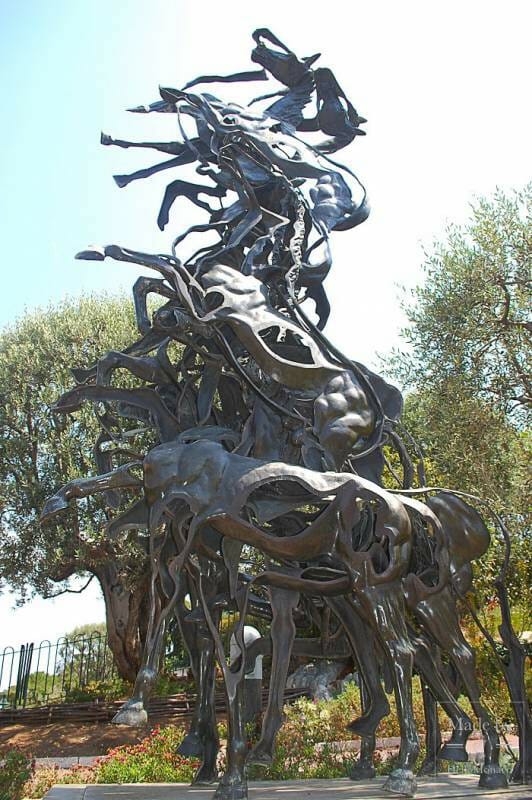
«Motophant» is not the only sculpture by Arman in the Fontvieille park. If you walk a little further, you’ll see «The heroic cavalry». At first sight it seems that it is a huge horse that has reared up and is going to gallop away.
However, if you look more accurately at this composition, you notice an anatomic discrepancy between the sculpture and its live prototype — a horse. One has the feeling that the steel horse has reared up in such a rage that now it is about to burst into… various small cogs. Here we witness Arman’s accusatory message against the technical progress bringing harm to the environment. Arman reminds us again that we need to care about nature in an era of the rapid development of technologies and mechanics.
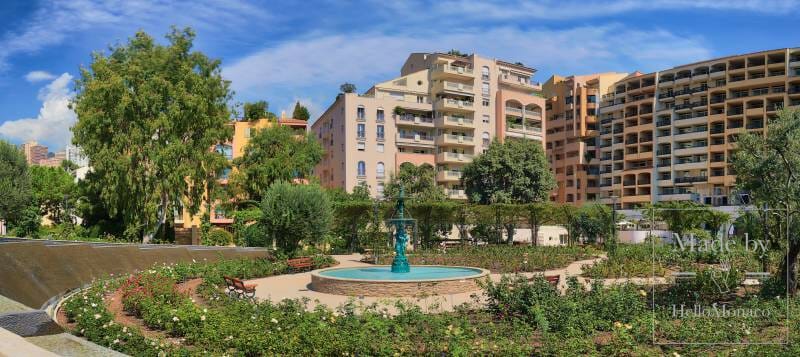
In fact, this sculpture represents the cavalry. You can see a certain number of horses in one bundle collated by metal harnesses organized in a sort of high tower. It gives you the impression that they want to escape from the steel chains which constrain them and to gallop free in the fields. Arman’s works have this quality — you try to dig deeper to understand their hidden meaning.
Armour
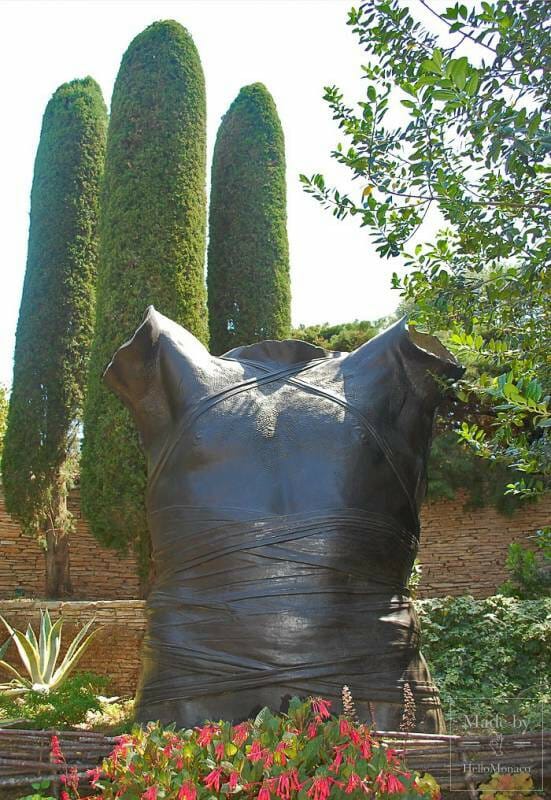
Continuing on the subject of chariots, cavalries and ancient battles, we move on to the next work, under the name «Armour». This creation by Igor Mitoraj in 1984 was subsequently presented as a gift to the Principality and erected in Fontvieille park. The Polish sculptor was born in 1944, and 22 years later he moved to Paris where he died in 2014. One of his monumental sculptures is known under the name «Grande Toscano» and it is on view in the French capital in the La Défense district today.
The human body was the primary subject of the works of Igor Mitoraj. The master was eager to show the beauty of the body, its strength and its fragility at the same time. He never made a sculpture of the whole human body, but his works always represent different parts of it. Works by Igor Mitoraj, sculpted on a huge scale, aim to remind us that the human being at the same time is a fragile creature.
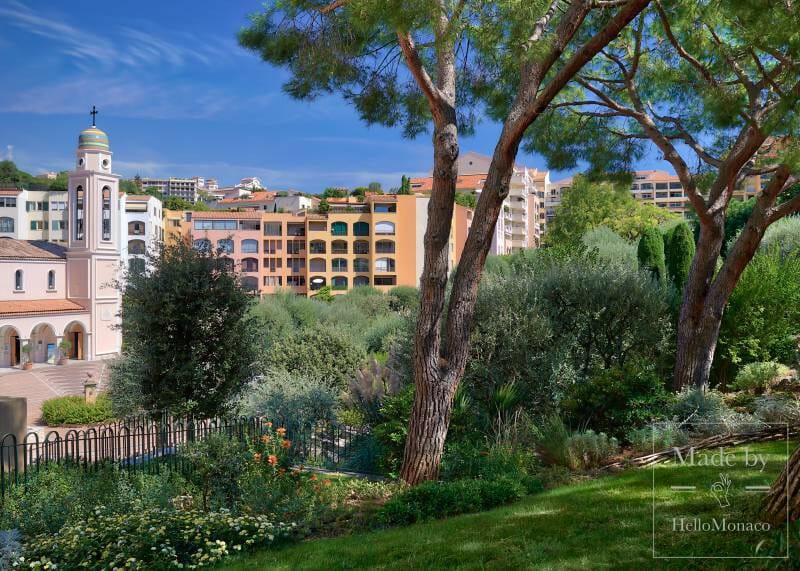
In his sculptures he intentionally left some imperfections — holes in the torsos and the heads which present gaping wounds showing the instability and uncertainty of human existence.
The Mute Slaves
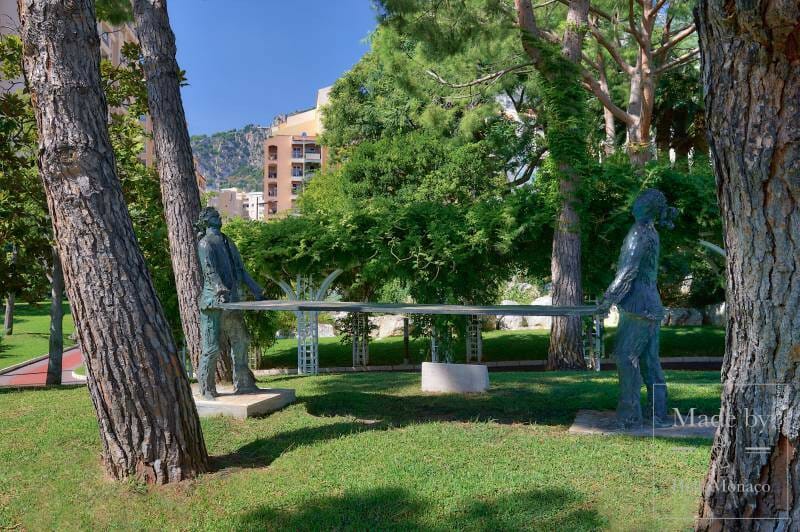
Roberto Barney, an Italian sculptor based in Florence, is represented in the Fontvieille park by his work «The Mute Slaves» dating back to 1989. Barney made a series of sculptures under the same name and donated this one to the Principality. These are two blindfolded men struggling to carry a heavy slate slab. This is an allegory about thoughtless and blind human progress, as if we are living our lives blindfolded. Not only are these men mute, but blind as well. Where can one go deprived of the possibility to express one’s thoughts or see one’s way? That is the question prompted by «The Mute Slaves» sculpture.
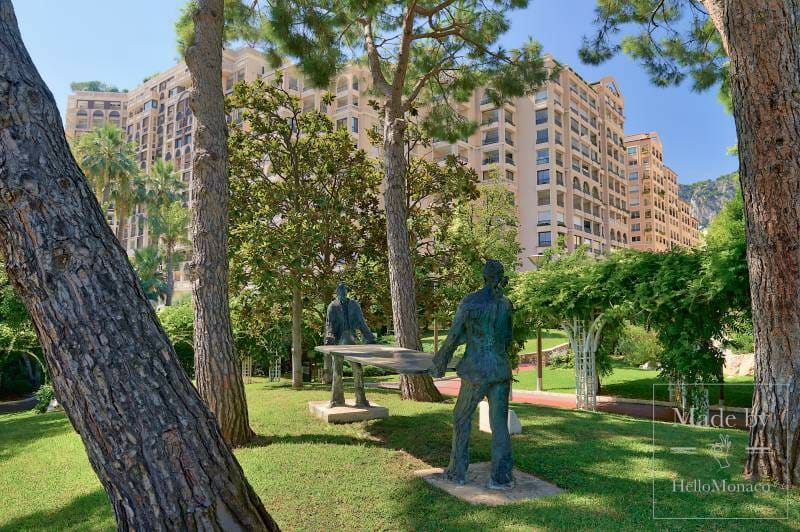
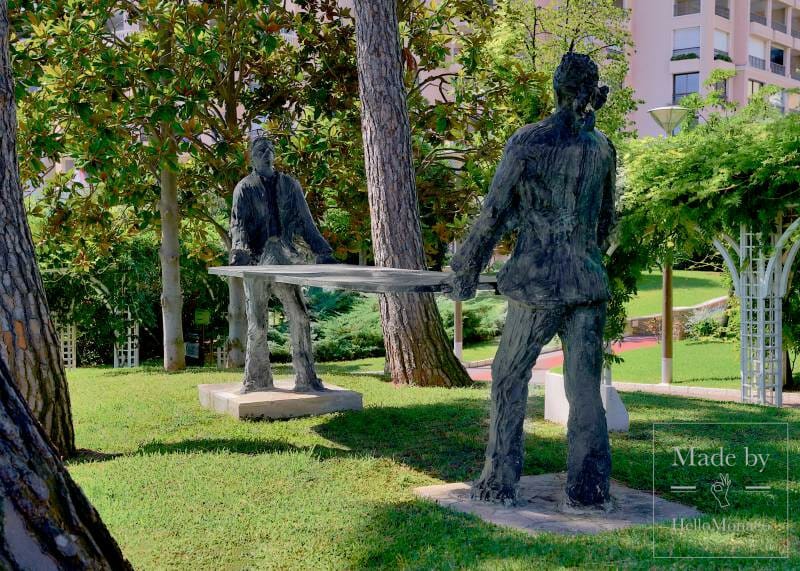
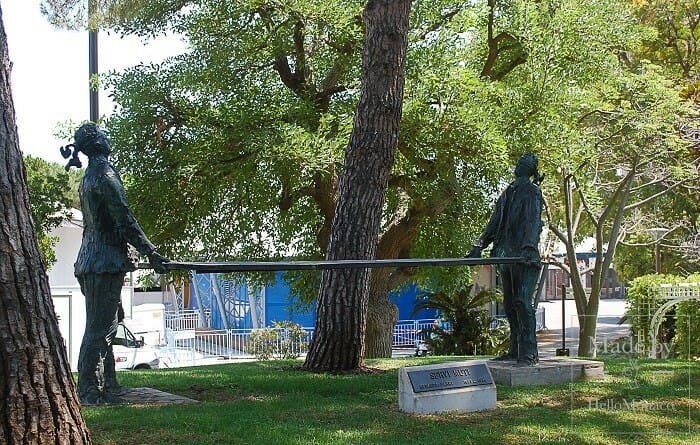
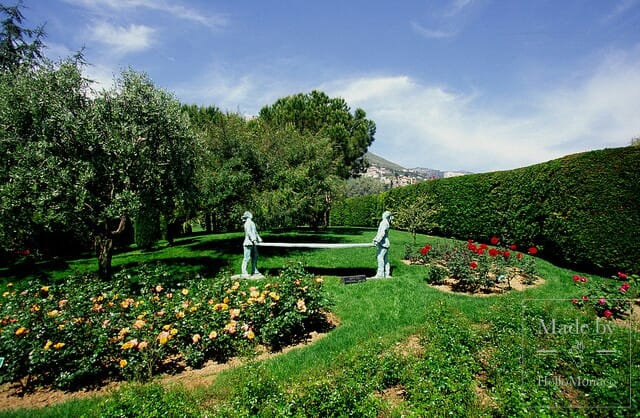
A Torso of Despair
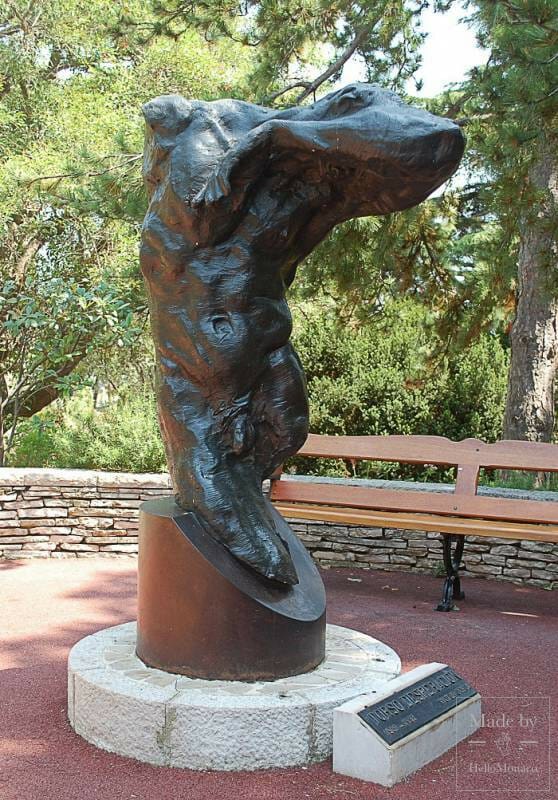
This is a creation of sculptor Victor Ochoa, hidden in the depth of the Fontvieille park. Here you can silently reflect on the past, or maybe the future, sat on one of the park’s benches.
This Spanish artist is mainly known for his celebrity portraits. As to his sculptures, they always dwell on the human body. Ochoa traditionally focuses on a nude male figure. He is particularly interested in the relations between man and nature. He believes that clothing is only creating a barrier between the two.
Like many sculptors, Victor Ochoa started off with painting. He is an author of a number of celebrity portraits. They include: Spanish King Juan Carlos I; Spanish and American biochemist Severo Ochoa; Nobel Prize winner in Physiology and Medicine, Santiago Ramon y Cajal; Spanish writer and publicist Camilo José Sela and many others.
Brother and Sister
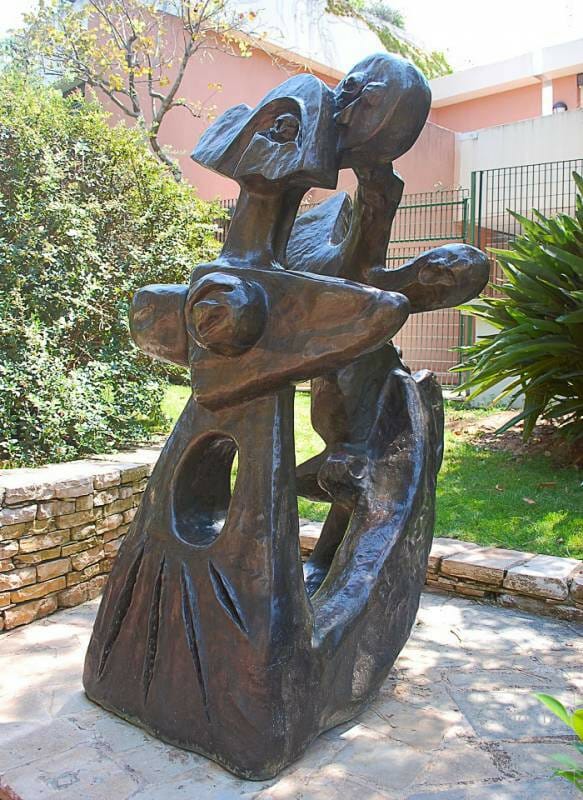
This sculpture by French artist André Masson is remarkable for its surrealistic lines. After the sculptor was seriously injured in World War I, the doctor told him: «Don’t ever live in big cities again!» Following his advice, Masson settled down in Aix-en-Provence. He did not manage to live all his life there, however. One way or another, his life would take him to Italy and then to Paris. In 1964 André Masson actually painted the ceiling of the famous Parisian Odéon theater.
Masson attained fame in the artists’ and sculptors’ world in his own lifetime. Ernest Hemingway even purchased several of his works. Masson died in Paris at the age of 91. His children followed in his artistic footsteps.
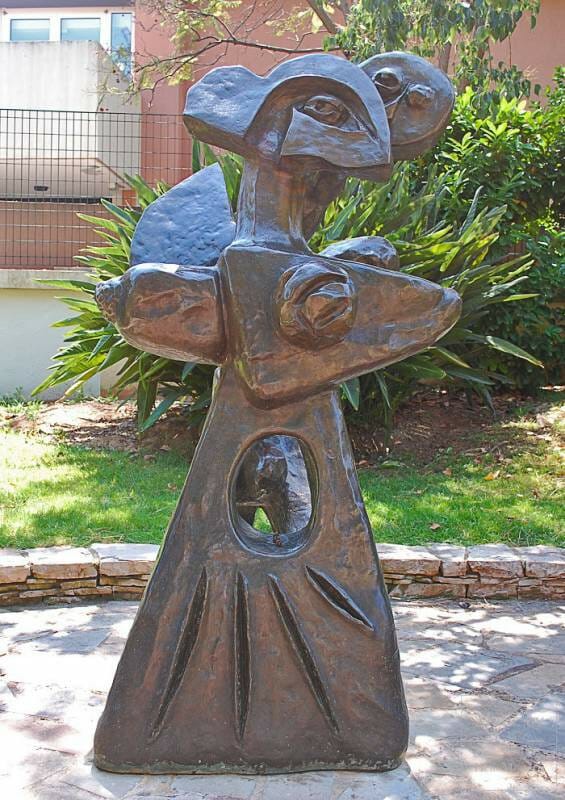
The «Brother and Sister» sculpture, just like any other surrealist work, only suggests the contours of a human body. We can guess two figures tightly drawn toward each other; the rest is up to our imagination. Think of the World War I atrocities that the young Masson had to experience. Imagine a smoke-filled burning village and barely distinguishable figures of two children lost in this turmoil. They have no idea what’s going on. Everything is a blur in the smoke and fire. The wars of the past century traumatized André Masson’s entire generation. Not surprisingly, even his seemingly peaceful works are reminiscent of the War.
Mysterious Horseman
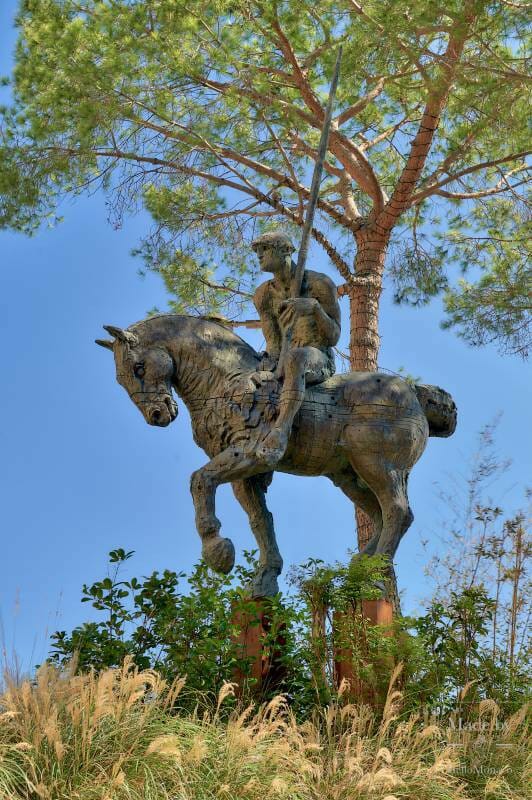
Let us finish off our journey with a little mystery. Here is another sculpture in the Fontvieille park — a horseman looking into the distance. It feels like he is just holding his horse back from galloping away at full speed, while obediently frozen and waiting for directions. Strangely this mysterious sculpture bears no name or sign. We can only guess the identity of this mysterious horseman and his unknown path. It may be up to you, dear readers, to solve this Fontvieille sculpture mystery. Until then, this anonymous horseman by an anonymous sculptor will stand on guard in the small Principality’s park.
